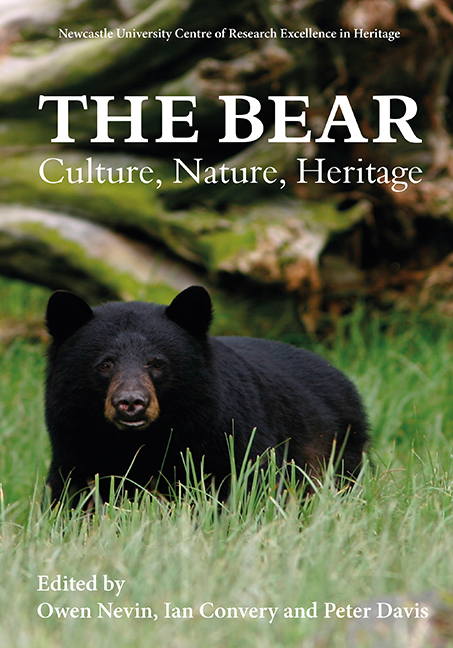Book contents
- Frontmatter
- Contents
- List of Illustrations
- Acknowledgments
- List of Abbreviations
- Foreword: The Bear: A Cultural and Natural Heritage
- Introduction: What is a Bear?
- Bear-People Interactions
- Bears in the Public Gaze
- Bear Biology, Management and Conservation
- Afterword: “It's Me Bear”: Reflections on a Unique Career Working with Bears
- List of Contributors
- Index
- Previous titles
4 - Bears in Gay Culture: Histories, Discourses and Anthropomorphism
Published online by Cambridge University Press: 21 March 2020
- Frontmatter
- Contents
- List of Illustrations
- Acknowledgments
- List of Abbreviations
- Foreword: The Bear: A Cultural and Natural Heritage
- Introduction: What is a Bear?
- Bear-People Interactions
- Bears in the Public Gaze
- Bear Biology, Management and Conservation
- Afterword: “It's Me Bear”: Reflections on a Unique Career Working with Bears
- List of Contributors
- Index
- Previous titles
Summary
The emergence and alignment of gay male culture and sub-culture to the discourse and image of the bear has an uneven and complex history. Gay male bears and the signification of the bear are now entrenched in the commodification of gay culture, and many of the social and sexual practices allied to bears problematically appropriate and subvert both gay and straight male identity politics. An implicit trademark of gay bear identity ‘is the adoption of a conventionally masculine appearance and the accompanying rejection of the stereotyped notion that gay men cannot demonstrate masculine behaviour’ (Suresha 2002). Yet, many of the social and sexual practices associated with bear culture underscore some broader conflicts across gay and straight male culture. Significant tensions which exist, such as the relationship between male social, erotic and sexual desire, the ontological and psychological position of men, patriarchy, hetero-sexism, homophobia, normativity, misogyny, and the problems of discriminatory and intersectional positions allied to factors such as race, age, class and geography, all underpin the identity of the gay bear. This chapter will examine and position some of these issues and consider how the varied histories, discourses and visual signification of the bear as a gay man and a wild animal have been anthropomorphically assimilated and employed to construct the bear as a specific symbol of gay masculinity and culture. Just as gay bears attempt to ‘challenge relational aspects of masculinity, encouraging a traditionally masculine appearance while allowing for non-traditional male expressions of affection, intimacy, and nurturance’ (Manley et al 2007, 92) they do so in ways which might be viewed as reductive and reflective of patriarchal and phallocentric dominance. In this way the gay bear functions as a crucial paradox in contemporary gay male culture; at once a way for gay men to negotiate and express their masculinity and desire, whilst also remaining a contentious symbol of how gender binaries and discriminatory sexual constructs might be reiterated and reinforced.
GAY BEARS: INDETERMINATE HISTORIES
The history and development of gay bears as well as their formation as a gay male subculture allied to the image of the bear as an animal are multifaceted.
- Type
- Chapter
- Information
- The Bear: Culture, Nature, Heritage , pp. 45 - 54Publisher: Boydell & BrewerPrint publication year: 2019



